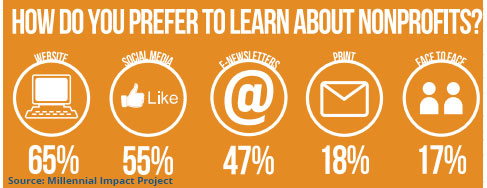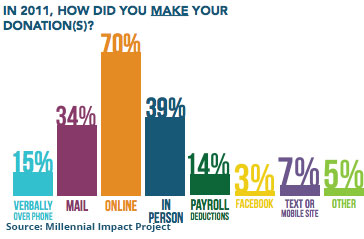Les diplômés français sont-il prêts à donner à leur établissement?
 \EXCEL et wdm.directinet en collaboration avec OpinionWay ont étudié la générosité des étudiants et des diplômés français en faveur de leur établissement.
\EXCEL et wdm.directinet en collaboration avec OpinionWay ont étudié la générosité des étudiants et des diplômés français en faveur de leur établissement.
Cette étude unique en France a mesuré la propension aux dons des étudiants et anciens diplômés des universités, écoles de commerce et d'ingénieurs.Cette étude unique en France a mesuré la propension aux dons des étudiants et anciens diplômés des universités, écoles de commerce et d'ingénieurs.
Nous vous invitons à télécharger le rapport d'étude du premier baromètre ALUMNI ici: Livre blanc Baromètre Alumni. Contact : Jérôme Deana, Tél: 01 56 02 35 91, Mail: jerome.deana@excel.fr.
Conclusion
Ce premier baromètre met en exergue l’hétérogénéité du paysage de l’enseignement supérieur en France et de ses cultures réellement distinctes.
Dans la course aux dons des anciens, les écoles de commerce et d’ingénieurs semblent a priori les mieux placées, favorisées qu’elles sont par la préexistence d’une relation étroite avec leurs diplômés, animée notamment par l’association des anciens.
Les écoles d’ingénieurs et de commerce récoltent ainsi les fruits d’années d’investissement dans la relation avec leurs anciens, les ¾ d’entre eux se sentant attachés à leur établissement contre 1 sur 2 seulement en université.
Pour autant, et c’est là l’un des enseignements majeurs de ce baromètre, l’intention de don est réelle et avérée chez tous les diplômés, quel que soit l’établissement d’origine: 1 diplômé sur 2 en moyenne, qu’il soit issu d’une université ou d’une école, se déclare prêt à faire un don à son établissement et pense que le don est un bon moyen de favoriser la qualité de l’enseignement des écoles et universités. Autre motif de satisfaction pour les écoles et universités, plus de 8 diplômés sur 10 sont favorables au principe du financement privé des établissements supérieurs, cassant ainsi l’idée préconçue que ce rôle incombe à l’Etat.
Toutes ces données démontrent qu’il existe, en France, un terrain particulièrement propice à l’émergence du don dans l’univers de l’enseignement supérieur. Même s’il ne se traduit pas encore dans les faits puisque seuls 7% des diplômés déclarent avoir déjà fait un don à leur alma mater.
Tout le défi pour les établissements consiste dès lors à transformer cette posture déclarative en véritable acte de don.
Cette étude nous fournit des premières clés pour y parvenir:
1. En tenant compte de la motivation première des diplômés, les établissements feront un effort particulier pour mieux valoriser leurs projets auprès de leurs anciens, en insistant sur leurs impacts;
2. Ne pas hésiter à exprimer le besoin financier de l’établissement;
3. Envisager la relation sur le long terme à travers de véritables stratégies relationnelles;
4. Pour les universités: les rassurer sur la transparence dans l’utilisation des fonds;
5. Sans oublier la première règle d’or en collecte de fonds: pour collecter, il faut d’abord et avant tout… demander!
Enfin, perspective particulièrement encourageante pour l’avenir, les étudiants se montrent plus conscients de l’utilité du don que leurs aînés et sont tout aussi nombreux que les diplômés à avoir déjà donné à leur établissement. Et ce, en dépit de moyens que l’on peut supposer nettement inférieurs.
Ces résultats prometteurs soulignent l’intérêt pour les établissements d’instiller une culture du don dès les premières années d’études. L’éducation au don, à travers notamment des dons de promotion, sera demain un facteur clé du développement de la philanthropie dans le paysage de l’enseignement supérieur français.
 \EXCEL and wdm.directinet in collaboration with OpinionWay studied the generosity of French students and graduates for their establishment.
\EXCEL and wdm.directinet in collaboration with OpinionWay studied the generosity of French students and graduates for their establishment.
This study is unique in France measured the propensity to donations from alumni and students from universities, business schools and engineering. More...












/https%3A%2F%2Fprofilepics.canalblog.com%2Fprofilepics%2F1%2F0%2F1076071.jpg)